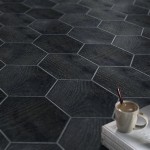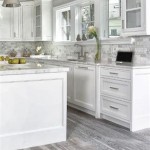Floor Lamps and Table Lamps: Illuminating Choices for Every Space
Effective lighting design is crucial for creating aesthetically pleasing and functional spaces. Within the broad spectrum of lighting options, floor lamps and table lamps occupy prominent positions, offering versatility and targeted illumination for diverse environments. Understanding the characteristics, advantages, and applications of both floor lamps and table lamps is essential for making informed decisions when planning or modifying a lighting scheme.
Floor lamps, typically freestanding fixtures, provide illumination from a vertical structure extending from the floor. Table lamps, conversely, are designed to rest on horizontal surfaces such as tables, desks, or nightstands. While both share the fundamental purpose of providing light, their design, functionality, and placement strategies differ significantly. These differences make them suitable for distinct roles within a room, contributing to both ambient and task lighting.
Understanding the Functionality of Floor Lamps
Floor lamps serve multiple purposes in interior design. Primarily, they contribute to ambient lighting, filling a room with a soft, diffused glow. This is particularly useful in spaces where overhead lighting is insufficient or undesirable. A well-placed floor lamp can eliminate harsh shadows and create a more welcoming atmosphere. The height of a floor lamp often allows it to cast light over a wider area compared to a table lamp.
Beyond ambient lighting, floor lamps can also be strategically positioned for task lighting. Floor lamps equipped with adjustable arms or shades are ideal for reading nooks, crafting areas, or home offices. These adjustable features allow for directing light precisely where it is needed, minimizing eye strain and improving focus. The ability to reposition a floor lamp easily provides flexibility as needs change within a room.
Furthermore, floor lamps serve as decorative elements. Their designs range from minimalist and modern to ornate and traditional. A statement floor lamp can become a focal point in a room, adding visual interest and complementing the overall design aesthetic. The sheer variety of styles, materials, and finishes available ensures that a floor lamp can be found to match any interior decorating scheme.
Considerations for selecting a floor lamp include the size of the room, the existing furniture arrangement, and the intended use of the lamp. In smaller spaces, a slim, minimalist floor lamp might be more appropriate than a large, ornate one. The height of the lamp should also be considered in relation to nearby furniture. A lamp that is too short might be obscured by a sofa, while one that is too tall might overwhelm the space.
Exploring the Versatility of Table Lamps
Table lamps are a staple in most homes, offering a combination of functionality and aesthetic appeal. Their primary role is to provide localized illumination, making them ideal for task lighting and accent lighting. Placed on a desk, a table lamp provides focused light for reading, writing, or working on a computer. On a nightstand, it offers gentle light for bedtime reading or as a comforting source of light during the night.
Unlike floor lamps, table lamps typically provide a more concentrated pool of light. This makes them well-suited for tasks that require precision and focus. The shade of a table lamp plays a crucial role in determining the quality and direction of the light. A translucent shade will diffuse the light more evenly, while an opaque shade will direct the light downwards, creating a more focused beam.
Table lamps, like floor lamps, contribute significantly to the overall décor of a room. They are available in a vast array of styles, from classic to contemporary, and can be used to complement or contrast with the existing furniture and accessories. A well-chosen table lamp can add a touch of elegance, sophistication, or whimsy to a space. The base of the lamp, the shade, and the overall design all contribute to its aesthetic appeal.
When selecting a table lamp, consider the height of the table or surface on which it will be placed. The lamp should be tall enough to provide adequate illumination, but not so tall that it overwhelms the space. The size and shape of the shade should also be proportional to the base of the lamp. A shade that is too large or too small can look disproportionate and detract from the overall aesthetic.
Furthermore, the color and material of the shade can affect the quality of the light. Light-colored shades tend to transmit more light, while dark-colored shades tend to absorb more light. The material of the shade can also affect the texture and quality of the light. Linen shades, for example, tend to create a soft, diffused light, while metal shades tend to create a more focused beam.
Strategic Placement and Considerations for Effective Lighting
The strategic placement of both floor lamps and table lamps is paramount for achieving optimal lighting design. The placement should consider the intended function of the space, the existing sources of light, and the desired ambiance. Thoughtful placement can enhance the functionality of a room and create a more visually appealing environment.
In living rooms, floor lamps are often placed behind sofas or armchairs to provide ambient lighting and create a warm, inviting atmosphere. They can also be used to highlight architectural features or artwork. Table lamps are commonly placed on end tables, coffee tables, or console tables to provide task lighting and add a decorative touch. A combination of floor lamps and table lamps can create a layered lighting scheme that is both functional and aesthetically pleasing.
In bedrooms, table lamps are typically placed on nightstands to provide reading light and create a relaxing atmosphere. Floor lamps can be used to illuminate darker corners of the room or to provide ambient lighting. Consider the height of the nightstand and the style of the bedroom when selecting table lamps. The lamps should be proportional to the nightstand and complement the overall design aesthetic.
In home offices, table lamps are essential for providing task lighting and minimizing eye strain. They should be placed on the desk in a position that provides adequate illumination without creating glare. Floor lamps can be used to supplement the overhead lighting and create a more comfortable work environment. Adjustable floor lamps are particularly useful in home offices, as they allow for directing light precisely where it is needed.
Beyond placement, the type of light bulb used in floor lamps and table lamps significantly impacts the quality of light and the overall ambiance of a space. Incandescent bulbs provide a warm, yellowish light, while LED bulbs offer a cooler, more energy-efficient option. Compact fluorescent lamps (CFLs) are another energy-efficient choice, but they may not be compatible with all lamp fixtures. The color temperature of the bulb, measured in Kelvin (K), also affects the perceived warmth or coolness of the light. Lower Kelvin values (e.g., 2700K) produce a warm, yellowish light, while higher Kelvin values (e.g., 5000K) produce a cool, bluish-white light.
Dimmer switches can be added to both floor lamps and table lamps to provide greater control over the intensity of the light. This allows for adjusting the light level to suit different activities and moods. Dimmer switches are particularly useful in living rooms and bedrooms, where they can create a more relaxing and inviting atmosphere. Smart bulbs, which can be controlled remotely via a smartphone or voice assistant, offer even greater flexibility and convenience.
Finally, consider the overall energy efficiency of the lighting scheme. Using energy-efficient bulbs, such as LEDs, can significantly reduce energy consumption and lower electricity bills. Choosing lamps with energy-efficient designs and features can also contribute to a more sustainable home. Regularly cleaning lamps and replacing burned-out bulbs can help to maintain optimal lighting performance and extend the lifespan of the fixtures.

Lavish Home 58 In Dark Brown And Black Modern Rustic Led Floor Lamp End Table With Usb Charging Port Hw1000075

Franklin Iron Twist 63 1 2 Metal And Walnut Tray Table Floor Lamp N5774 Lamps Plus

Dewenwils Floor Lamp With Table For Living Room 62in Rustic Farmhouse Wooden Lamps Attached End Bedroom Office Read

Lighting Urban Mood

Guide To Choosing The Perfect Table Lamp For Every Room

Led Fabric Floor Lamp Usb Charging Port Energy Saving Standing Light With Table Ebay

Floor Lamp Vs Table Which Is Best For You

Maxax New York 66 Quot Black Gold Wood Tray Table Floor Lamp With Usb F02 The Home

Mycelium Mod Floor Lamp Table Carbons

Floor Lamp With Table Natural Wood Room Essentials Etl Listed Linen Shade Metal Body 60 Height








